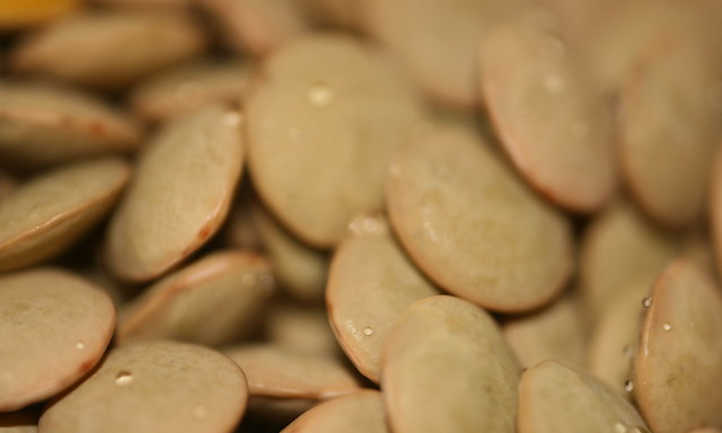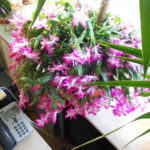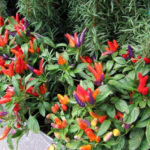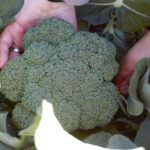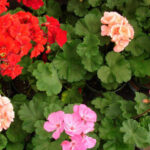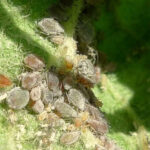Lentils are one of the most nutrient-dense foods on the planet. They are packed with protein and dietary fiber, and are often believed a “superfood”. In fact, lentils are the oldest pulse grow grown, and probably one of the first domesticated crops in the history of humanity. Growing lentils has been occurring for thousands of years.
In major religions like Judaism, lentils are used as a “mourning” food as their round shape reflects the everlasting circle of life. People in India use lentils as a staple food source and they’re often found in curries or as a thickener for vegetarian stews. And in Italy, lentils are the side for a traditional New Year’s Eve sausage feast.
But how do lentils grow? Are they easy to harvest, and do they grow well in most regions? Let’s talk about all things lentil-based, from sowing seed to storage!
Quick Care Guide
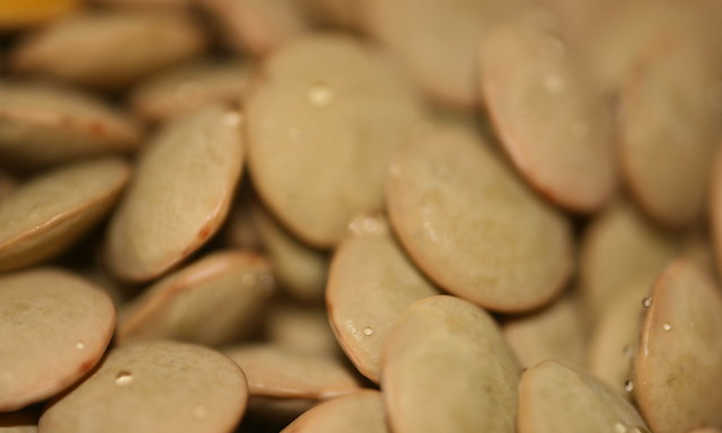
| Common Name(s) | Split pea, red dhal, mercimek, adas, messer, heramame |
| Scientific Name | Lens culinaris |
| Days to Harvest | 80-110 days |
| Light | Full sun |
| Water: | 1″ per week, more in hot weather |
| Soil | Well-draining, adaptable to soil type |
| Fertilizer | 2 applications of low-N, high-PK |
| Pests | Aphids, thrips, wireworms, seedcorn maggots, Lygus bugs |
| Diseases | Fusarium and Rhizoctonia root rots, Ascochyta blight, Sclerotinia stem rot |
All About Lentils
Lens culinaris, the lentils plant, has many different names. The term “lentil” is a direct reference to the word “lens”, which not only references its botanical name but its shape. The legumes resemble small lenses.
In Ethiopia, the lentil is called Messer. Turkey refers to them as Mercimek. Masser or red dhal is the term for lentil in India, and Adas is the Arabic term. The Japanese refer to them as Heramame.
Lentil crops are annually grown and belong to the Fabaceae plant family. The pods contain edible seeds, each pod producing at least two seeds that can be split if desired. The vine itself is quite slender with hairy, erect, branching stems.
These vines produce dainty flowers in mostly white and less commonly purple, pink, and blue that are arranged on graceful racemes. Each raceme contains 1-4 flowers. The leaves of lentils are alternately arranged. Each leaf consists of 4-7 separate leaflets that are oval in shape. Lentil pods are between 0.1-0.3 inches in size. Yellow, black, green, and red-orange are common colors of lentil seeds.
An annual, the lentil plant does not grow back in subsequent years. It reaches its height of about 20 inches prior to any significant amount of flowering or fruiting.
Planting Lentils
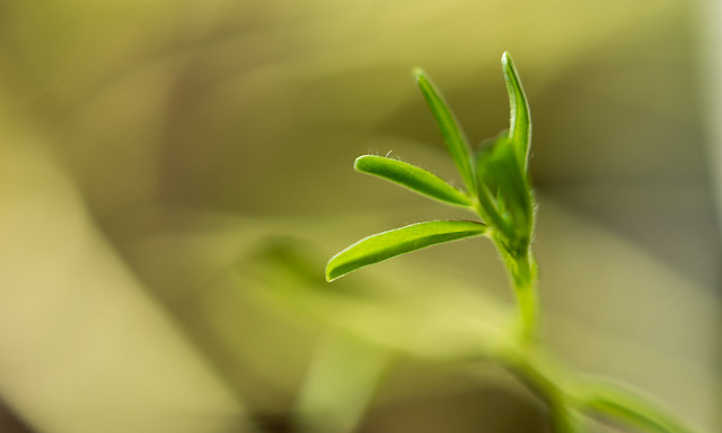
Planting lentils is easier than you can imagine. They are a wonderful crop to add to your garden and yield a rewarding harvest. So let’s go over what you need to know to start!
When To Plant
Lentils grow best from spring into the hot months. Sow seeds indoors in early spring about 2 weeks before the last frost date. Transplant them outdoors in the garden. If starting directly in the beds, wait until after the final frost. The soil should be around 68 degrees F for successful seed germination which will occur in about 10 days.
Where To Plant
Lentils are often planted in containers as well as in garden beds. However, young crops must be protected from frost and wind. Choose a location that has full sun, but gets some protection from high wind.
Lentil plants grow as branching vines. They tend to spread and need a reasonable amount of space. The plants require a low trellis for support and plenty of air circulation.
How To Plant
To plant Lens culinaris, the seeds must first be inoculated with a natural bacteria called Rhizobium leguminosarum. This rhizobacteria will bind to the newly forming roots and absorbs nitrogen from the air to transfer to the roots and soil, thus helping the plants grow more vigorously. Because of this, inoculated plants can also be great nitrogen-fixers in your garden!
Inoculate the seeds on the day of the seeding. Dampen the seeds and roll them in the powdered inoculant to coat them well. Once coated, immediately sow the seed in either starter pots or directly in the ground. Typically, it’s best to sow about 1” deep. As they emerge, thin the seedlings to 5” apart, choosing only the most vigorous to remain. If you’re doing multiple rows, space the rows at least 18” apart. Germination should take about 10 days in soil temperatures around 68 degrees.
Container-started plants should also be thinned to only the most vigorous seedling, and planted at least 5” apart. Transplant at the same relative depth it was at in its container.
Care

When you grow lentils, they do require a few specific things to be sure they become well established. Let’s go over some of those now!
Sun and Temperature
Full sun is ideal for growing lentils. Aim for 8 hours of good sunlight per day for best development.
Your lentils are best started off when the weather is cool but the soil is warm. They can be grown during cooler, temperate weather, but they tend to perform the best once it gets comfortable outside. They’re sensitive to frost, and will suffer damage if it gets below 50 degrees.
Tolerant of hot weather, these plants will still sometimes have smaller harvests if it gets too hot. Temperatures over 90 degrees for long periods of time can reduce the harvest size significantly.
Water & Humidity
One inch of water per week is the minimum goal for your lentils. In hot weather, they might like a bit more. The best time to water is in the early morning, which allows any damp leaves to dry out during the warmth of the day. Try to water at soil level rather than wetting down the foliage.
As the pods begin to dry, stop watering. This allows the pods to dry out properly and also begins to weaken the lentil plant, making it easier to harvest later.
Growing plants can be subject to a number of diseases more common in humid conditions. For these plants, a lower humidity range of 30-40% is nearly ideal. Many parts of the world utilize the drier seasons for growing their plants.
Soil
While they’re not picky about the soil type itself, lentils cannot tolerate waterlogged soil. Well-draining soils that are rich in organic matter are ideal. These are grown best in a neutral to slightly-alkaline pH range of 6-7, preferably with lots of compost worked into the soil to allow the plants to thrive.
Fertilizing
Where many plants are nitrogen-dependent, lentils follow the standards of beans, peas, or other legumes. Their primary need for nitrogen is right after germination, after which the inoculant you’ve provided for them can supply up to 80% of their nitrogen needs.
Because of this, your fertilizers should focus more on phosphorous and potassium. Phosphorous is a relatively high need for good root development, where potassium is crucial and a high need for flowering and pod development.
When you grow lentils, start with a soil rich in organic materials to begin with. This should supply the nitrogen you need early on. Then, as the lentil plants develop, you can apply a low-N, high-P&K organic granular fertilizer. One to two applications of that fertilizer should be plenty for the season.
Be careful to opt for organic sources rather than crystallized ones. Lentils are sensitive to various types of salts and the roots can easily be burned by them.
One additional nutrient your lentils may enjoy is sulfur. A small dose of sulfur applied with your first feeding will enable the seedlings to take up the PK fertilizers a bit better. Be forewarned that if your soil is on the alkaline side, it may not actually need the sulfur as it may already be present.
Pruning / Training
During the growing season, lens culinaris does not generally need to be pruned. There are a couple exceptions to this rule. One is when removing diseased or pest-damaged material to prevent further spread of the disease or pest. Another is when providing airflow to tightly-packed foliage.
However, they do need to be trained to a trellis, which often reduces the need to prune to open up the plant. While they will climb on their own, using plant ties can help secure the stem to the trellis and provide extra support.
Propagation
Lentils are easiest to propagate via seed. It’s rare that there’s a need to use any other method as these annuals will grow quite readily from seed.
Lentil seeds should be planted 1” deep after being inoculated as per our planting directions above. If you opt to skip inoculation, you can, but the lentils will need additional nitrogen fertilizer. It’s our recommendation that you inoculate your seeds prior to planting.
Harvesting and Storing
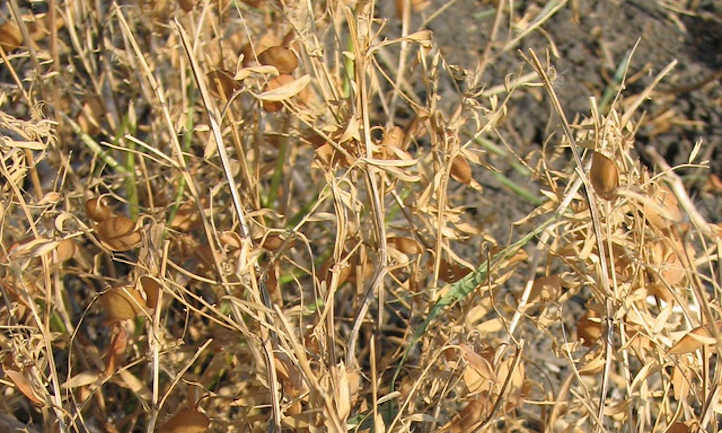
So you’ve spent all this time raising seeds to become big, strong lentil vines. What now? Let’s go over everything you’ll need to know about harvesting lentils and storing them for later!
Harvesting
The actual process of how to harvest lentils is quite simple. As the pods begin to dry, stop watering the plants. Wait for them to dry out as well, then pull the vines out and pluck the pods off. The vines themselves can be added to your compost pile to break down.
You will then need to remove the seeds from their pods and spread them out on a tray in a cool, dry location to finish drying out.
Storing
Storing your dried lentils is incredibly easy. Keep them in an airtight container in a dark cupboard. Adding a food-safe desiccant packet to the container can help reduce any moisture that might still be present in the container. If kept completely dry, they can last for quite a long time, but are best used within a year of harvest.
Troubleshooting

There’s quite a host of problems that can occur when lentils grow. Most of them are not severe, but they’re no less difficult to deal with. Let’s go over the issues that might arise.
Growing Problems
Lentils are not very competitive with weeds, and can actually suffer when they’re young seedlings. Keep the area around your plants free of weed growth. Be careful when removing weeds that are close to the slender stems of your younger lentils, as the roots of the weeds may be entangled with those of the lentils.
Air circulation is a necessity. When the vineline plants are being trained to their trellis, try to ensure plenty of space around them. This reduces the chance of many fungal-based diseases spreading from leaf to leaf.
Pests
There are a number of pests that can cause problems for your lentils, but as a regular rule these issues aren’t severely destructive. But you should still address them to reduce the pest population in your garden.
Two sucking pests, aphids and thrips, are opportunistic pests on the lentil. If they can, they pick juicier targets, but they’re willing to settle for the foliage of your vines. Yellow speckling on leaves is a symptom that aphids are hiding on the underside, and thrips are common on flowers. Populations of both can be reduced greatly with regular application of neem oil to all foliage, top and underside alike.
The wireworm is another annoyance. These click beetle larvae live in the soil and eat organic matter, and the roots of your legumes are quite tasty to them. They can be treated with a pyrethrin spray or with beneficial nematodes. Crop rotation also will reduce the likelihood of their appearance.
Seedcorn maggots can burrow into the lentil seeds and prevent them from germinating. Planting more seeds than you need will reduce this issue. You can also avoid it entirely by starting your legumes in pots.
Finally, the western tarnished plant bug (also called the Lygus bug) finds the foliage and fresh, undried lentil seed pods tasty. They’re more entranced by nearby growing strawberries, so you may find them drawn away by those. Pyrethrin will eliminate adults, but to reduce the population of their wingless nymph stage, you’ll also want to keep weeds away as they hatch amongst weeds and then travel to your plants.
Diseases
Two forms of root rot are common in lentil: Fusarium root rot and Rhizoctonia root rot. Both are caused by soilborne fungi. Application of a biofungicide such as MycoStop is showing some efficacy against fusarium, but slightly less against rhizoctonia. Inoculation with Rhizobium leguminosarum seems to work better against rhizoctonia. In both cases, it’s best to avoid overwatering, as that reduces the likelihood of either of these fungal causes developing in the first place.
Another disease that’s common when there’s been heavy spring rains and soggy soils is Ascochyta blight. This appears as a greyish patch on leaf surfaces with a brown-colored ring around it. It can spread to the pod and cause damage to seeds, as well. Remove damaged plant material and treat with a copper-based fungicide to reduce further spread. Do not over water.
Sclerotinia stem rot, often called cottony rot or white mold, is another issue which you might encounter. This materializes as a white, cotton-like mass of fungal spores on stem surfaces. It is incredibly difficult to treat this form of stem rot once it settles into the stems, and many organic fungicides are ineffective. Some beneficial mycorrhizae and bacteria can be used as a soil supplement (Pseudomonas chlororaphis, Bacillus amyloliquefaciens, Pantoea agglomerans) as they seem to boost the lentil’s ability to resist infection. Monitor lentil plants for signs of issues and remove and destroy damaged plants if an infection appears.
Frequently Asked Questions
Q: Are lentils easy to grow?
A: They certainly can be! As long as they have everything they like supplied, you should be able to readily harvest a great, protein-packed legume for your kitchen.
Q: Can you grow lentils from the grocery store?
A: Yes, you can use dry lentils from the grocery store to grow the plants, but be careful to avoid any which have dark brown to grey spots on them. If you find any that look like that, avoid that batch, as it’s all been exposed to ascochyta blight.
Q: How many lentils are in a pod?
A: Each pod contains up to 1-3 lentils.

